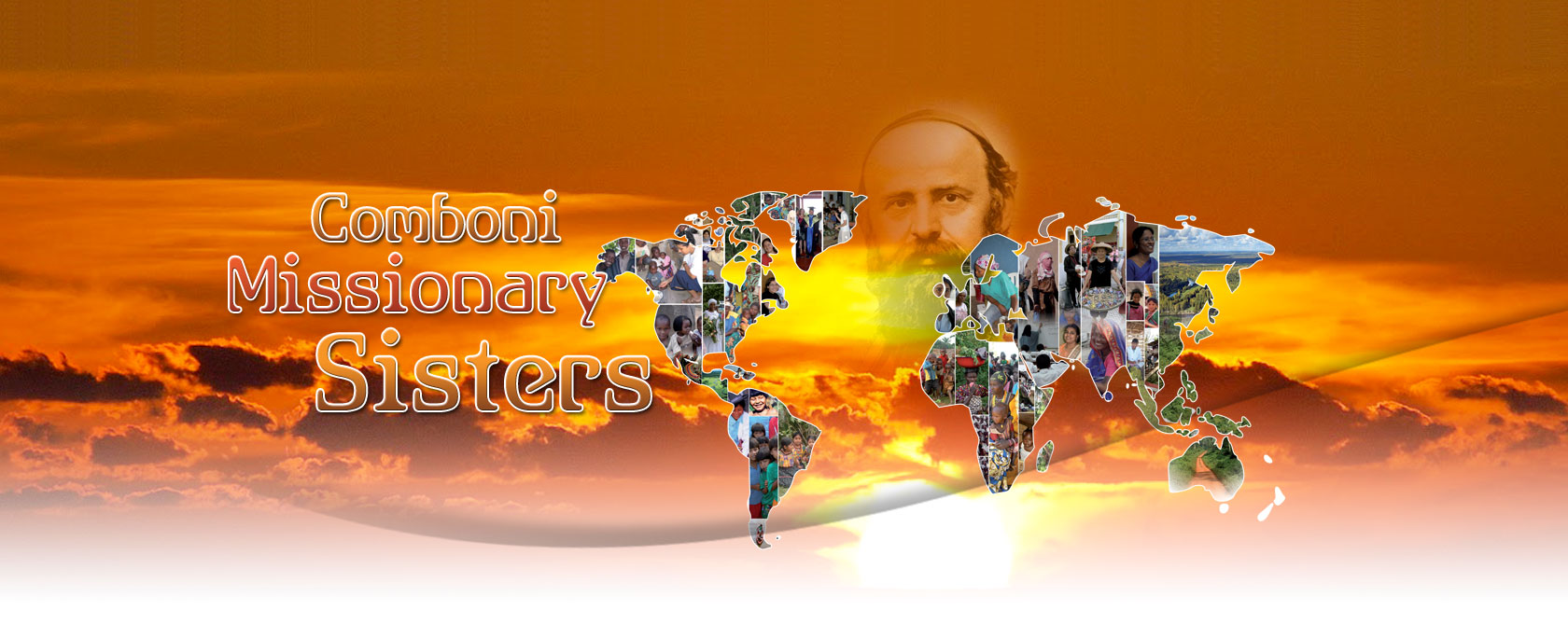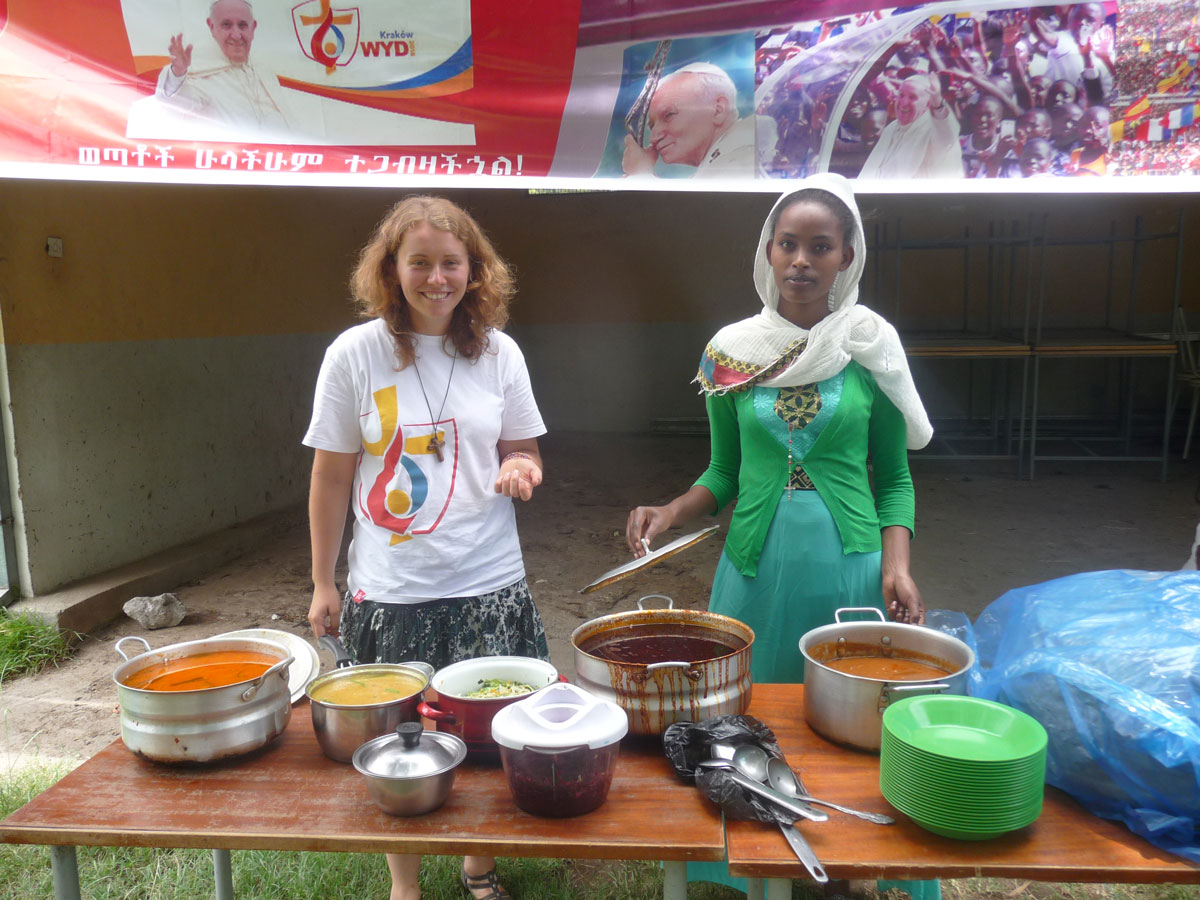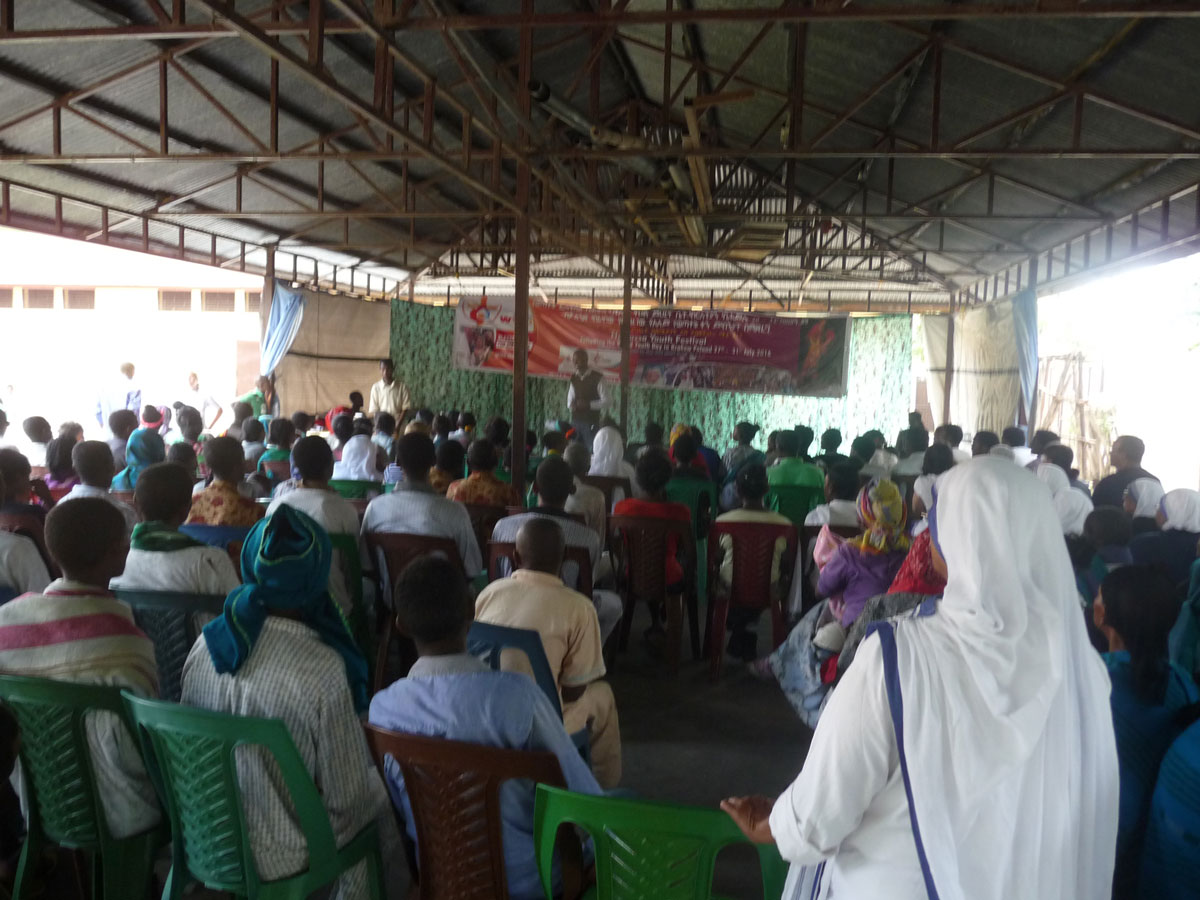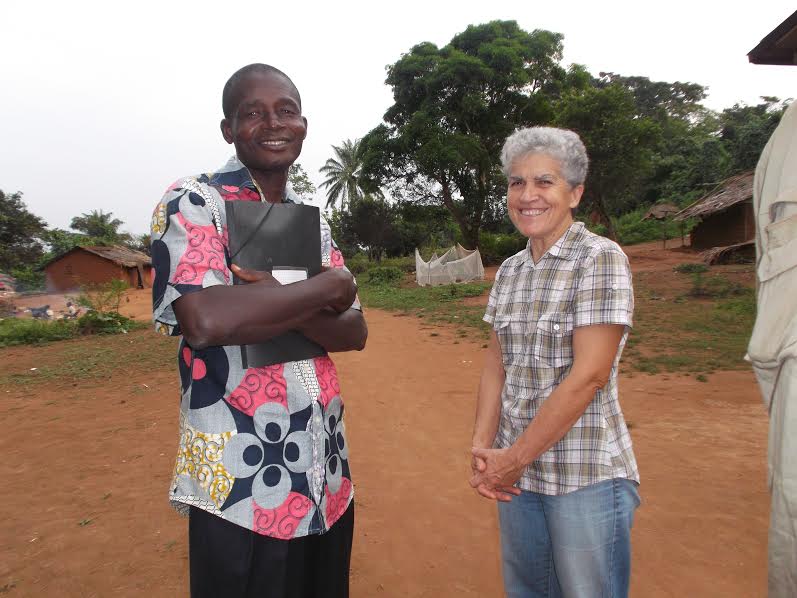We share this video about the Comboni sisters. To learn more about their work and be closer during this month that they celebrate its XX General Chapter.
Africa
XX General Chapter of the Comboni Missionaries Sisters
 From 05 to 30 September will take place in Verona (Italy) the XX General Chapter of the Comboni missionaries Sisters under the theme: “DARING THE MYSTERY OF ENCOUNTER IN ORDER TO LIVE COMBONIAN MISSION TODAY”.
From 05 to 30 September will take place in Verona (Italy) the XX General Chapter of the Comboni missionaries Sisters under the theme: “DARING THE MYSTERY OF ENCOUNTER IN ORDER TO LIVE COMBONIAN MISSION TODAY”.
“…Our missionary life consists of encounters: encounter with God, with people, with ourselves, with reality and with all that is created. But it consists also of clashes and, sometimes, also of indifference. In the context of a globalized and pluralistic world, we are challenged to cultivate and nurture the mystery of encounter, so that the other becomes a companion on the journey, a sister, a brother, and not a threat to be eliminated or from whom to flee. “Today, when the networks and means of human communication have made unprecedented advances, we sense the challenge of finding and sharing a “mystique” of living together, of mingling and encounter, of embracing and supporting one another, of stepping into this flood tide which, while chaotic, can become a genuine experience of fraternity, a caravan of solidarity, a sacred pilgrimage”. (EG 87). Considering the challenges for our missionary life, yesterday and much more today, we realize that these focus on relationships, on the encounter with the great diversity in our world, through a pluralistic mission, through being mission more than doing mission”. (Taken from the letter of the General Council)
As Comboni family, we join in prayer with all the sisters and ask, through the intercession of St. Daniel Comboni, that this time become a time of grace and listening to discover the challenges that the mission poses to the world today.
Poland – Hawassa World Youth Day
In Krakow, Poland, over a million people celebrated World Youth Day from July 25 to 31. My own little dream had been to attend the event (in Krakow). However, following my greater dream – that of going on mission to Africa, I had to drop it. However, I still wanted to join with Poland and the whole world in celebrating World Youth Day in whatever way I could. Because of that I got the idea of trying to organize a festival for the youth in Awassa, coinciding with the visit of Pope Francis and the program in Poland. As things turned out, it wasn’t easy.
Cooperation was a big challenge: some would come late, others would not keep their promises; things were disorganized and not everybody was very committed. Before the festival, I tried to build a team, but the leaders who were supposed to have helped did not always come to our meetings.
Two people helped with most of the issues: Tesfa, a young man very involved in Church activities and Engida, a parish worker. I was rather disappointed with the first day of the festival. Some people who were supposed to prepare some items were either late or did not turn up at all. Sometimes I had to improvise. Later on, things improved quite a bit.
Despite the difficulties, we managed to keep to our original plan. During the festival, we sang the WYD hymn, said the official WYD prayer, got to know St John Paul II and St Faustina Kowalska and listened to sermons about mercy. We had adoration of the Blessed Sacrament on Thursday. On Friday, we prepared the Stations of the Cross and a Reconciliation Service. Each day, we followed what was happening in Poland and we watched the news or even the live transmissions together.
On Saturday we went to Mother Theresa House – a centre for the sick – and we organized a short walk together. In the afternoon we had an artistic program including a theatre play, we had singing with various hymns, choreographies, poetry, a quiz about Poland and a conference. All parts of the celebration were associated with the Divine Mercy. I have to say that Saturday was wonderful.
We had some technical problems on Sunday, but we finally managed to watch part of the live transmission from Poland. We sang some hymns and evaluated the whole program. The participants seemed to be very happy. Even when some things went totally haywire, even with all the defects, the huge delays and different problems, I can say that, with the help of God, things worked out quite well. It was certainly a big lesson in humility. My lack of deep knowledge of the language created some difficulties and the lack of a well-organized team was also a huge drawback. Some people put great effort into the event, especially Tesfa who worked so hard on the program. I also got great help from people who just volunteered. In addition I have to say that local people were, as always, very kind, understanding and supportive when they saw I needed help. It was a great privilege to help organize the festival. It taught me a great deal about the place and the culture. I thank God for this wonderful experience; I thank everyone who helped make it a success. I have no regrets whatever!
Magda Fiec, CLM Ethiopia
News from the mission of Mongoumba
On July 3 the pastoral year ended. All the newly baptized, the scouts who already took their pledge and all the participants in the various pilgrimages attended Mass. The first pilgrimage was to Bangui for the coming of Pope Francis, and the second was to Mbaiki for the feast of the Sacred Heart. The Eucharist was quite long, lasting about three hours, but everyone was very happy.
The bishop of the diocese erected a shrine in honor of the Sacred Heart of Jesus on a hilltop from where one can enjoy a beautiful panorama. About 250 pilgrims from Mongoumba took part in the pilgrimage. We started off on May 30 and arrived on the night of June 1. I did not get to walk, because I had to drive one of the two vehicles loaded with kitchen utensils, the food and the cooks. However, I attended the prayers and the catechesis offered during the pilgrimage and then on June 2 in Mbaiki. On the day of the Sacred Heart of Jesus we went in procession to the shrine – a distance of about 4km – carrying along the image of the Sacred Heart of Jesus.
The Mass was broadcast by Radio Maria of Bangui, a radio station that easily reaches as far as Mongoumba. The pilgrimage concluded with a Mass in Batalimo, one of the parish’s chapels, with a Mass and the baptism of 30 adolescents. We were able to thank God for all of us being there in good health and happy. Annia was sick with malaria and could not attend. Neither could Elia, because someone had to stay behind to take care of Annia.
School ended at the end of June with a low percentage of graduates, since only about 50% of the students passed this year. I hope we will have better results next year…
Today I am in Mbaiki. I came to bring the teachers who are taking part in a two week course mostly dealing with French, math and education. May God help them to learn well so as to better teach their students.
Annia, the recently arrived Polish CLM, is adapting well and already knows enough Sango. She studies a lot, and continues to study French. It must not be easy to learn two languages at the same time.
I take advantage of the fact that now I am freer from school to help with the undernourished children.
Elia went back on July 2 and we already miss her! May the Lord help her and that all may work out well with the arm she fractured. She suffered a lot with it! If she can return we will be very happy.
Always united in prayer. I wish you all a good vacation.
Kisses.
Maria Augusta, CLM Mongoumba






